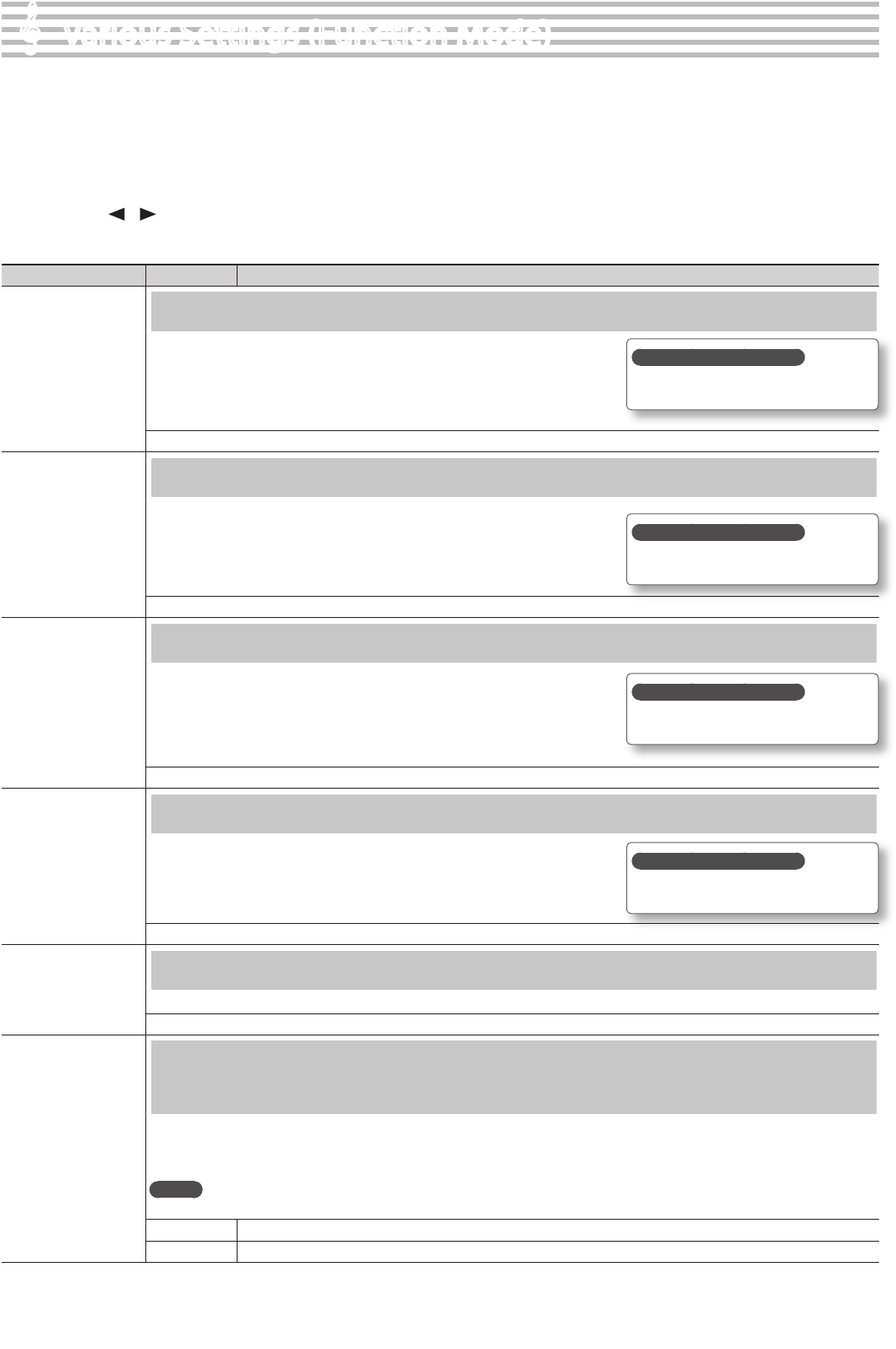
Indication Value Explanation
Dual Balance
Adjusting the Dual Play Volume Balance (Dual Balance)
When using Dual Play, you can adjust the volume balance between tone 1 and tone 2.
9-1 (tone 1 is louder)–9-9 (same volume)–1-9 (tone 2 is louder)
Master Tuning
Matching the Pitch with Other Instruments (Master Tuning)
When playing ensemble with other instruments and in other such instances, you can match
the standard pitch to another instrument.
The standard pitch generally refers to the pitch of the note that’s played when you nger the
middle A key (A4). For a cleaner ensemble sound while performing with one or more other
instruments, ensure that each instrument’s standard pitch is in tune with that of the other
instruments. This tuning of all the instruments to a standard pitch is called “master tuning.”
415.3 Hz–440.0 Hz–466.2 Hz
Temperament
Changing the Tuning Method (Temperament)
You can play classical styles such as Baroque using historic temperaments (tuning methods).
Most modern songs are composed for and played in equal temperament, the most common
tuning in use today. But at one time, there were a wide variety of other tuning systems in
existence. By playing in the temperament that was in use when a composition was created,
you can experience the sonorities of chords originally intended for that song.
For details, refer to “Temperaments” (p. 43).
Equal, Just Major, Just Minor, Pythagorean, Kirnberger, Meantone, Werckmeister, Arabic
Temperament Key
Specifying a Song’s Tonic (Temperament Key)
When playing with tuning other than equal temperament, you need to specify the
temperament key for tuning the song to be performed (that is, the note that corresponds to C
for a major key or to A for a minor key).
If you choose an equal temperament, there’s no need to select a temperament key.
C–B
Input Volume
Adjusting the Volume of an Audio Playback Device (Input Volume)
You can adjust the volume of an audio playback device that’s connected to the Input jacks.
0–10
Center Cancel
Playing Back an Audio File with Its Central Sound Minimized
(Center Cancel)
You can minimize the playback of sounds located in the center of the sound eld (e.g., vocals or melody instruments) of the selected audio le or
music from a digital audio player connected to the Input jacks.
* For some songs, sounds located in the center might not disappear completely, or the tone quality of the sound might be aected.
MEMO
You can also turn the Center Cancel function on/o by pressing the [Right] button.
On Sound at center reduced during playback.
O Normal playback.
How to save your settings?
Save your settings as described in “Memory
Backup” (p. 44).
How to save your settings?
Save your settings as described in “Memory
Backup” (p. 44).
How to save your settings?
Save your settings as described in “Memory
Backup” (p. 44).
How to save your settings?
Save your settings as described in “Memory
Backup” (p. 44).
Various Settings (Function Mode)
The same procedure is used for all settings in Function mode.
1. While holding down the [Key Touch] button, press the
[Transpose] button.
The [Key Touch] button and [Transpose] button will light; the HP507
will be in Function mode.
2. Press the [ ] [ ] (Slow/Fast) buttons to select the
function setting that you want to change.
3. Press the [–] [+] button to edit the value of the setting.
4. Press the [Key Touch] button or the [Transpose] button to
exit Function mode.
48


















